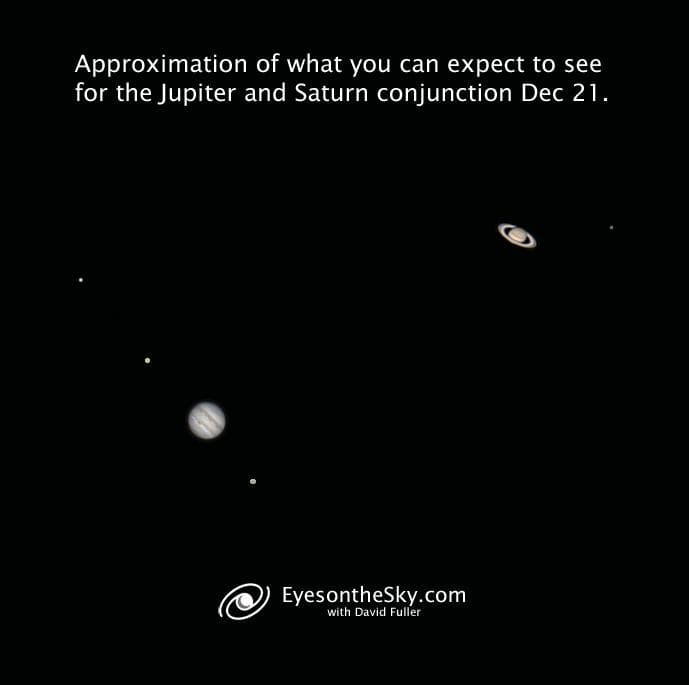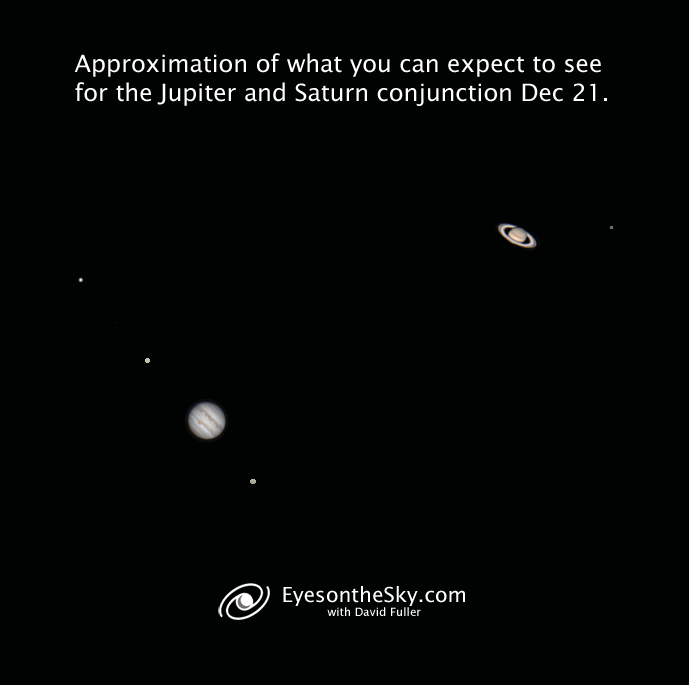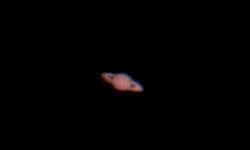
with David Fuller

The Great Conjunction of Jupiter and Saturn!
The Great Conjunction!
Two Giants Meet In The Sky
Conjunctions between two major planets happen regularly enough. But an extremely close one between the two largest planets in the solar system is very rare indeed! Although Saturn and Jupiter do pass one another in the sky every 20 years, the last time they were technically this close was in 1623. BUT... they were very close to the Sun then, and likely not observed. The last-closest approach prior to that? Well, it occurred in 1226 AD!
At least we have really great telescopes now! And fortunately, the next 'close approach' occurs in a bit more reasonably timeframe, in the year 2080.
If you just want to see this conjunction visually, you're in luck. The approach between these two gas giants occurs on December 21, when the two planets will be just 6 arc minutes apart. An arc minute is 1/60 of one degree, so 6 of them is just 1/10 of one degree. That's really close!
And yet, the planets themselves are much, much smaller. Jupiter is typically around 50 arc seconds across (an arc second is 1/60 of on arc minute), but presently it is only about 33". Saturn is smaller still at 15", though the rings extend about the same distance as Jupiter's total diameter.
Below is a graphic showing their relative sizes and distance apart on December 21, 2020:

This is a good approximation of what a view through a telescope may look like on that evening. But the planets do a dance towards one another for several days before and and then away for several more after the 21st. Here's how long you can see them, and in what field of view you may be able to peer at them through a magnified, telescopic view:
Many of us will want to not just see these, but capture them photographically. This is where things get challenging. Part of this is because the magnitude difference between the two planets is an issue for getting good detail/contrast, as Jupiter is 11.5x brighter than Saturn.
Your eye can perceive the two planets fairly easily. But a camera tends to either get overexposed or underexposed much more easily. Here's an example of the issue, as it relates to the moons of Jupiter.
Check out the photo here:

If you look carefully at Jupiter in lower right, you can see the four Galilean moons. They're tiny, but they are there.
However, to get those, that meant completely obliterating any detail on Jupiter and Saturn's surfaces. So it may require two different exposure settings and combining them to capture these. Or, lower gain in a video and then processing the resulting stacked image in PIPP, then Autostakkert! and finally in Registax. What about with a cell phone? Could happen through the eyepiece.
Here's a discussion on all those options, plus a DSLR through a telescope added in the mix as well:
So what will you do? Stick with visual observation? Attempt to capture an image, or images? Both?!? (That's what I will probably do!)
I sure hope that whatever you decide to do, you have clear AND steady skies, so you will make this a most memorable event for you and anyone else with whom you share this conjunction.

